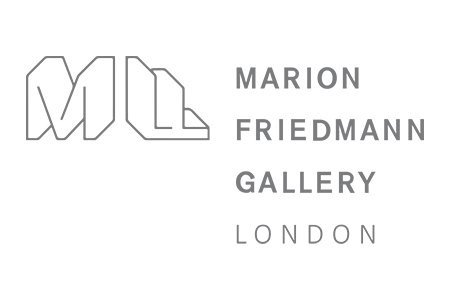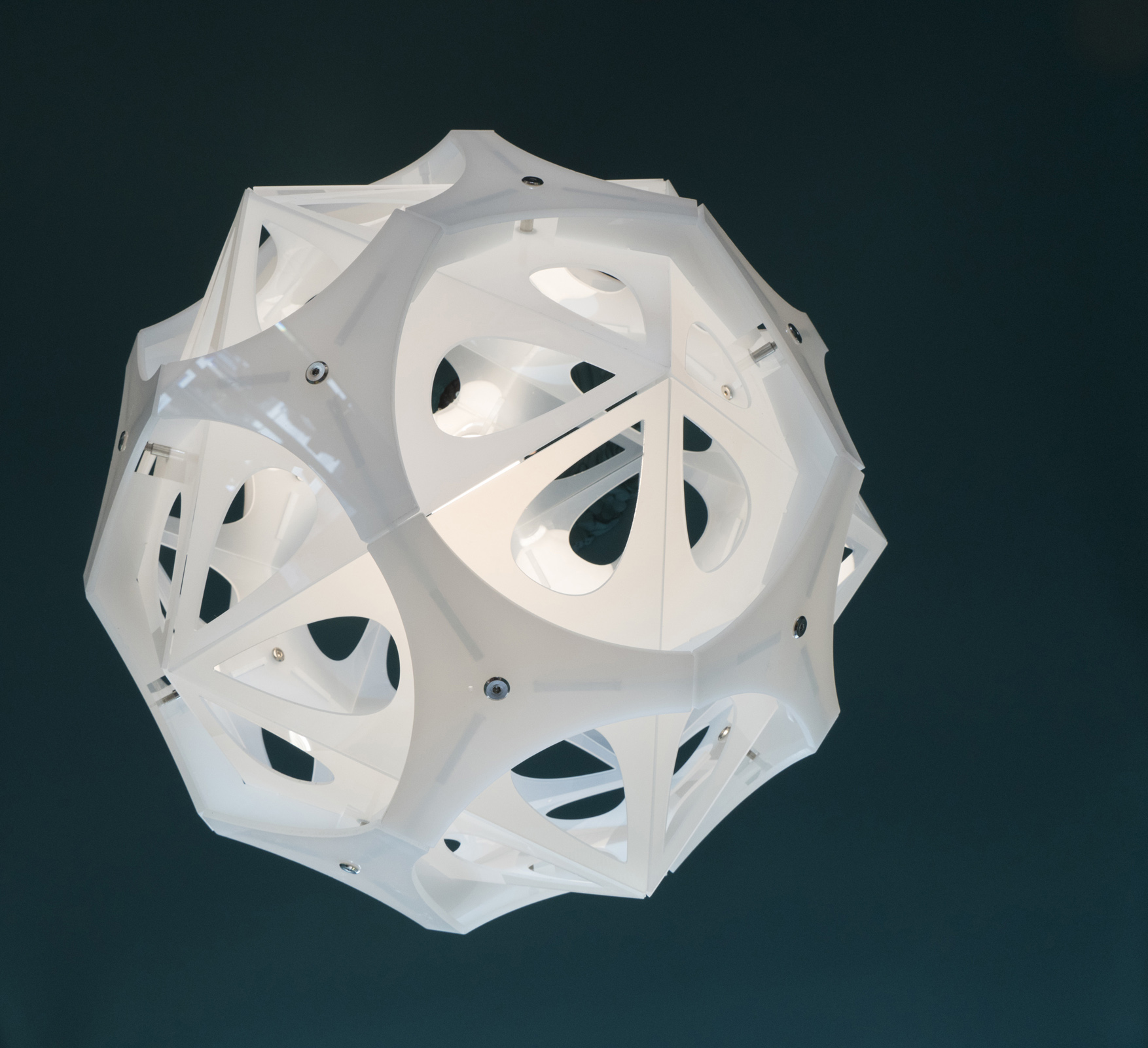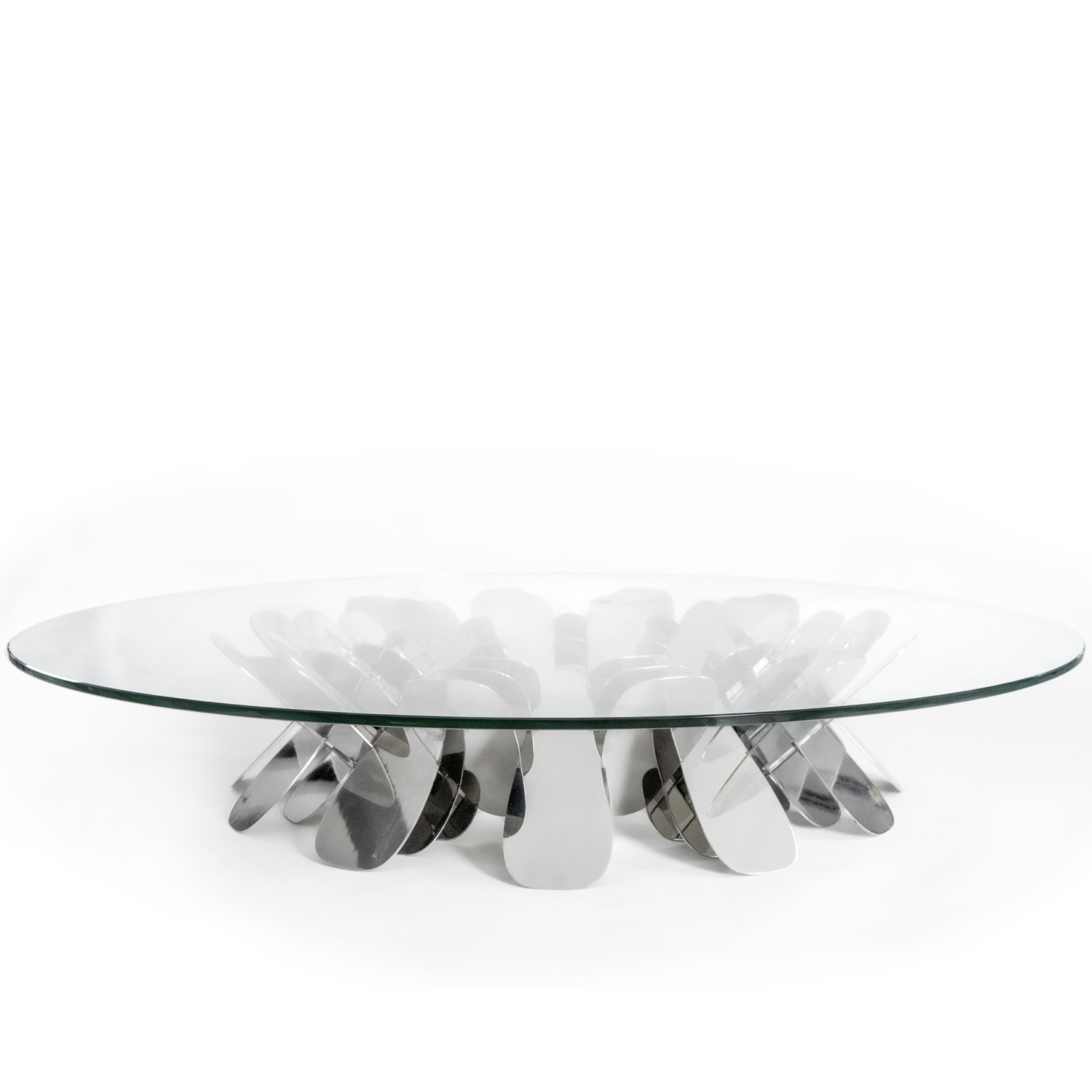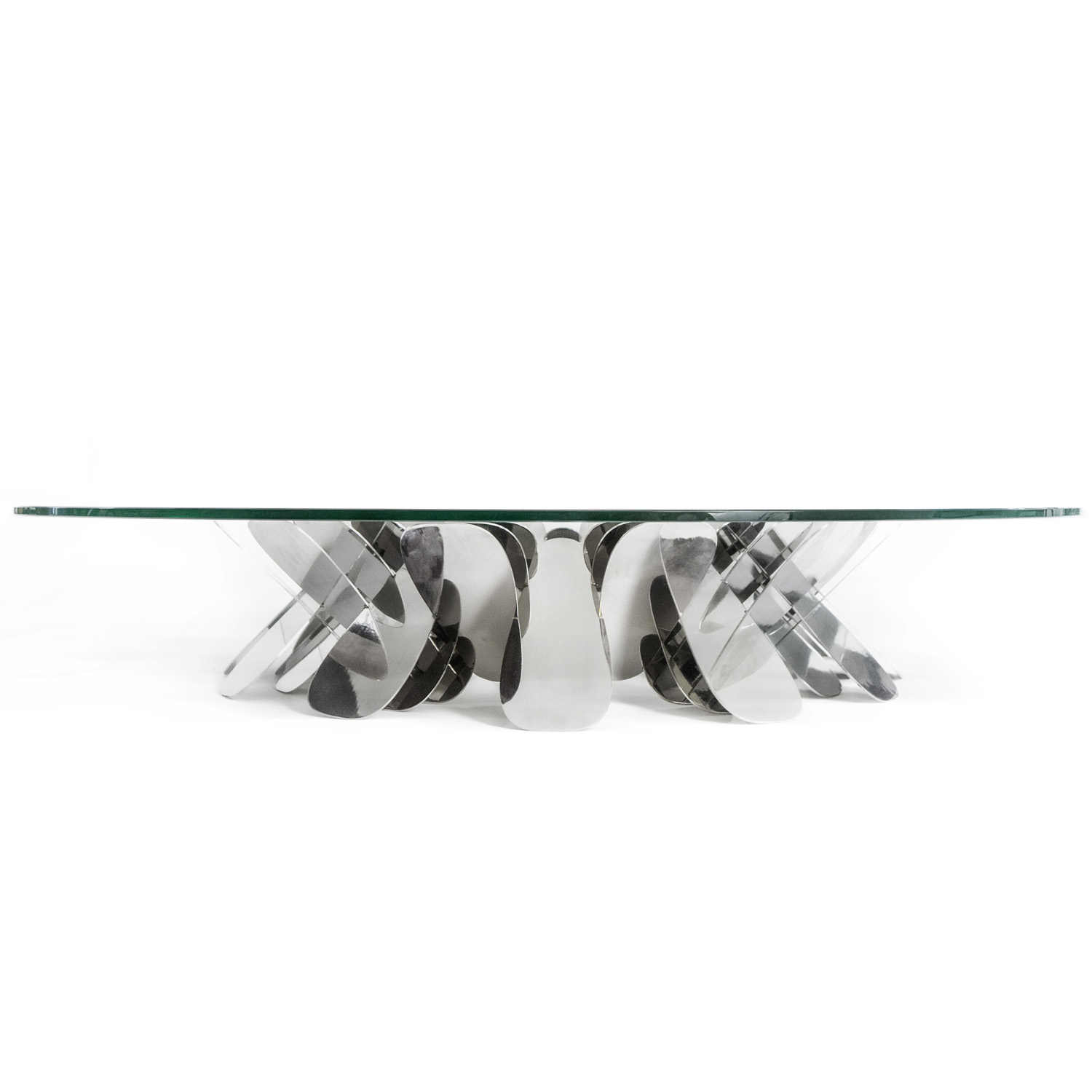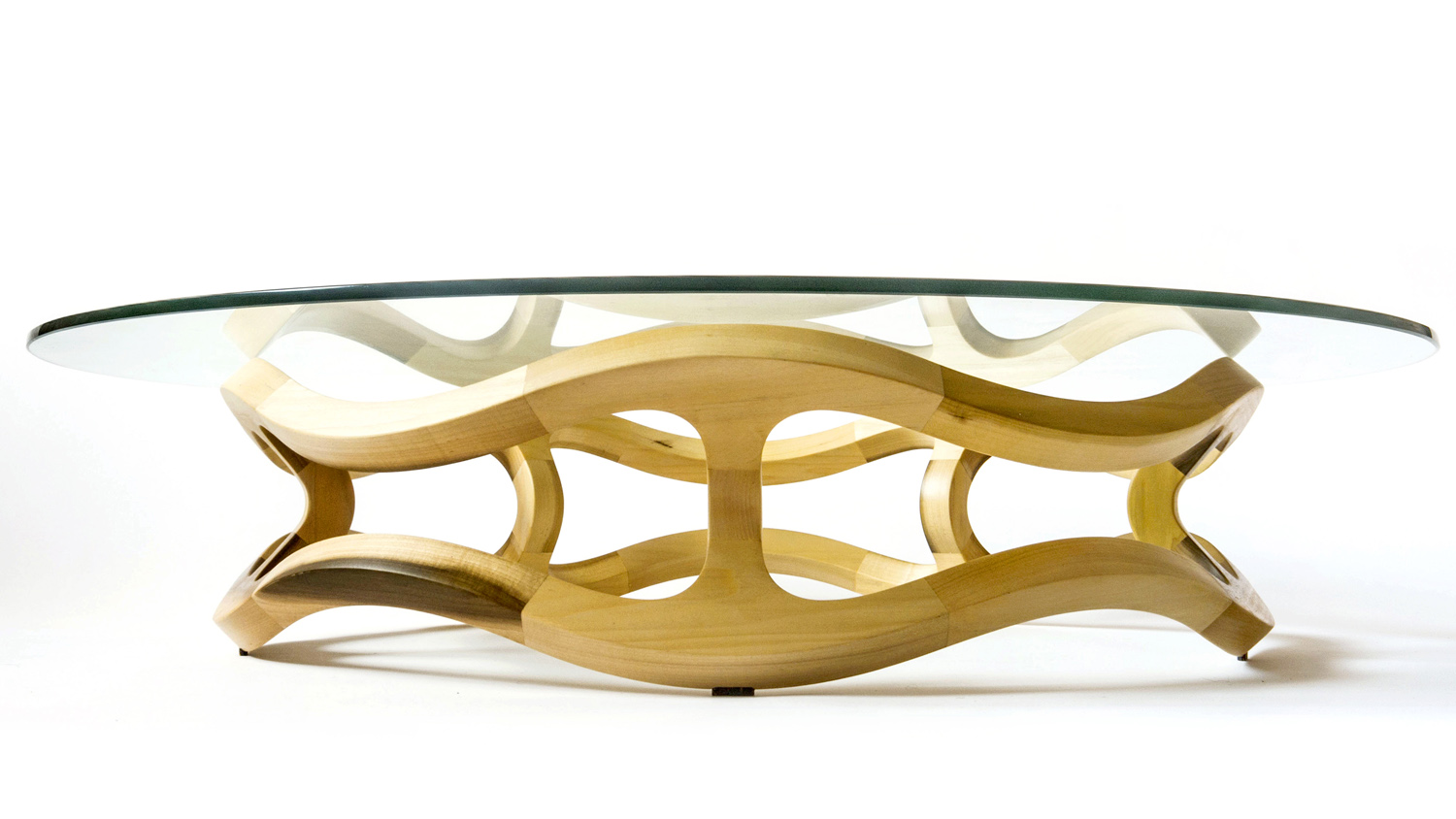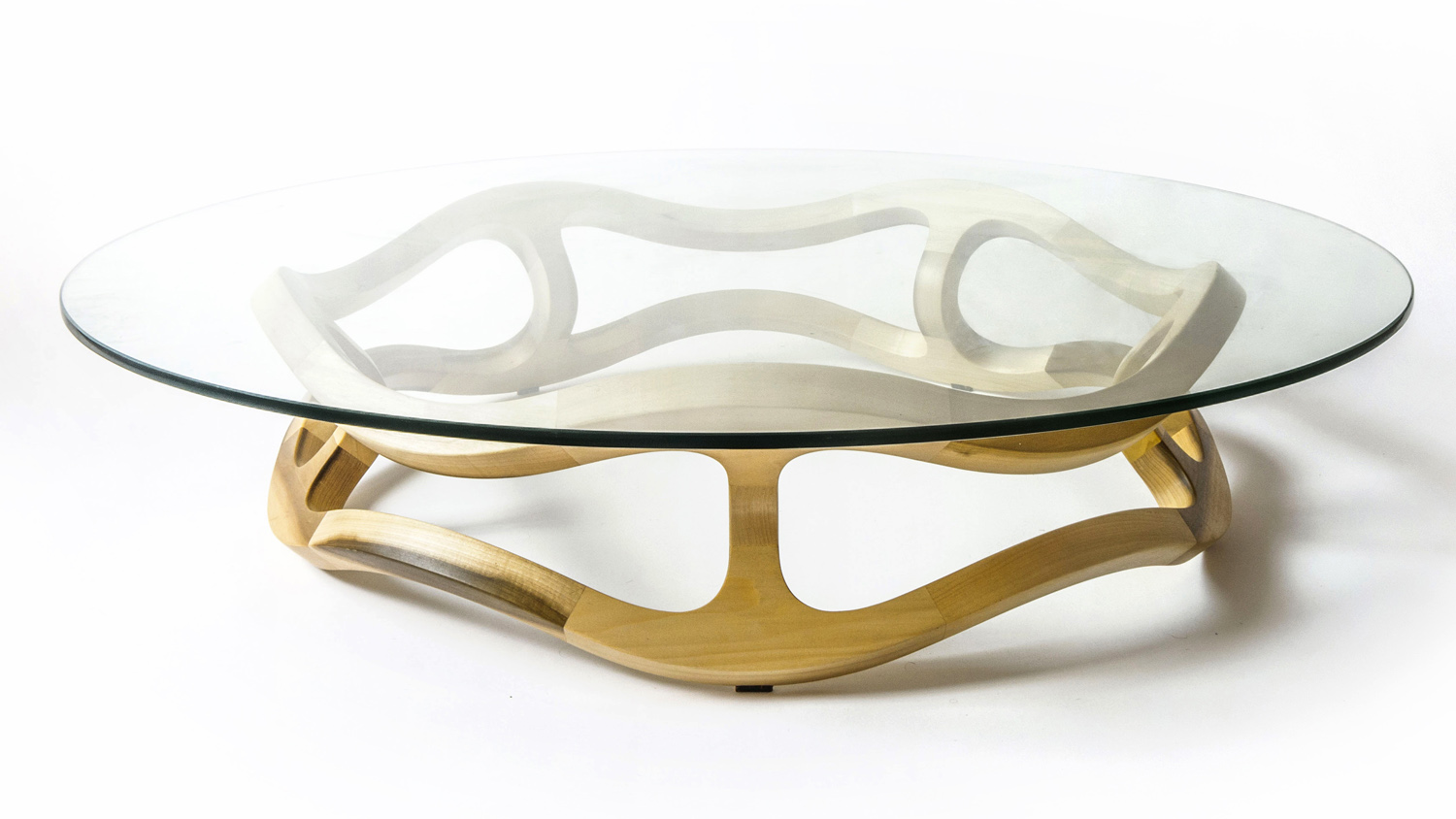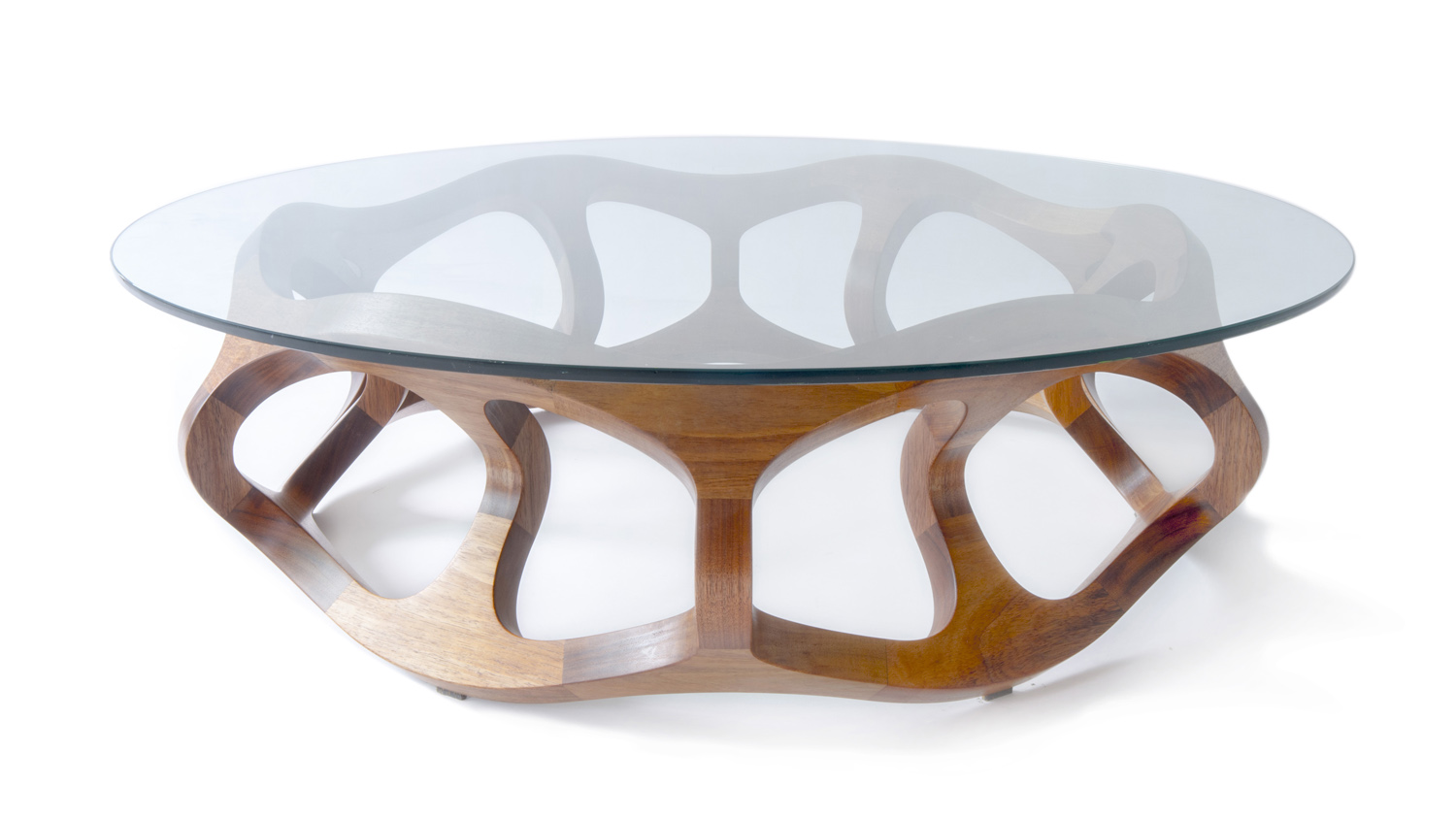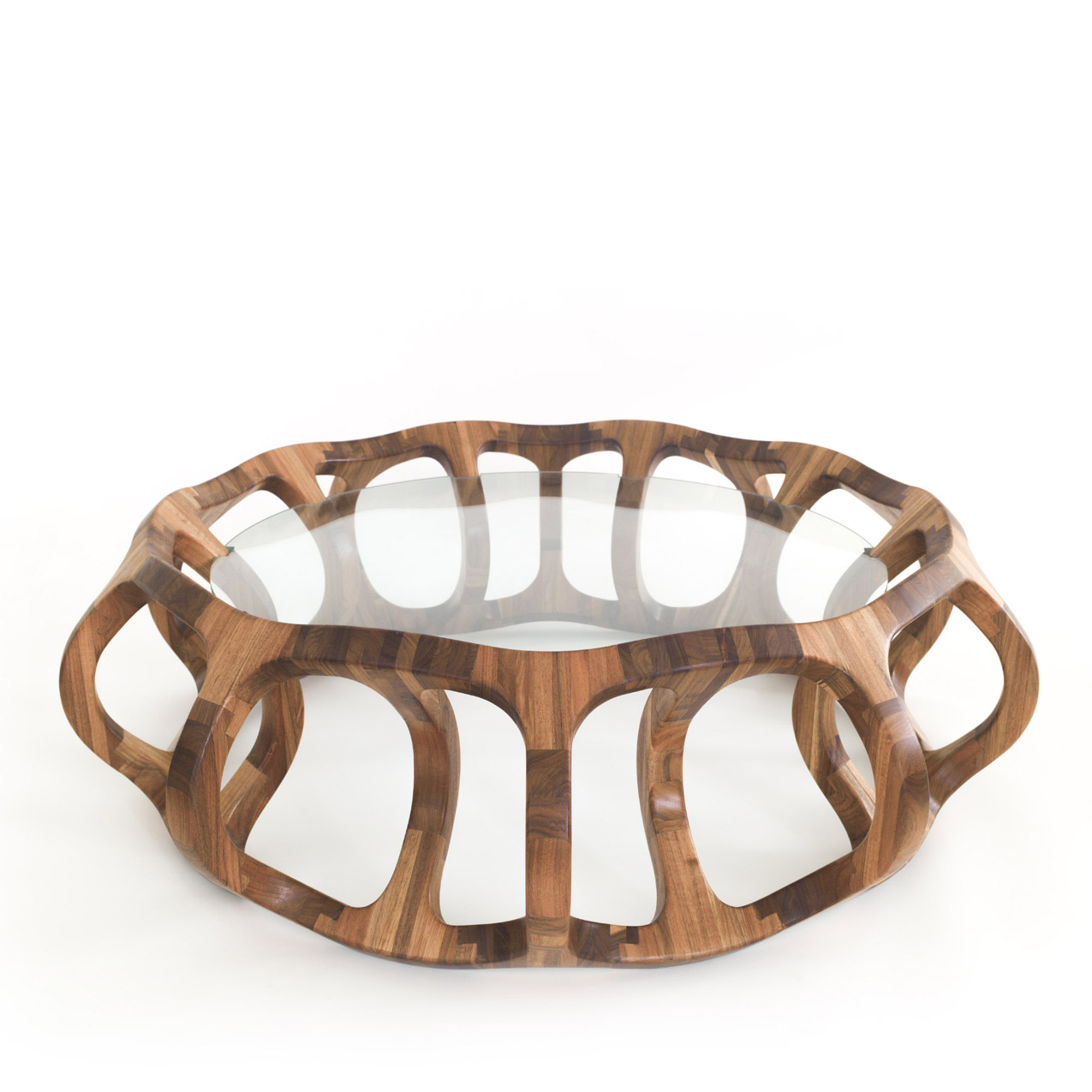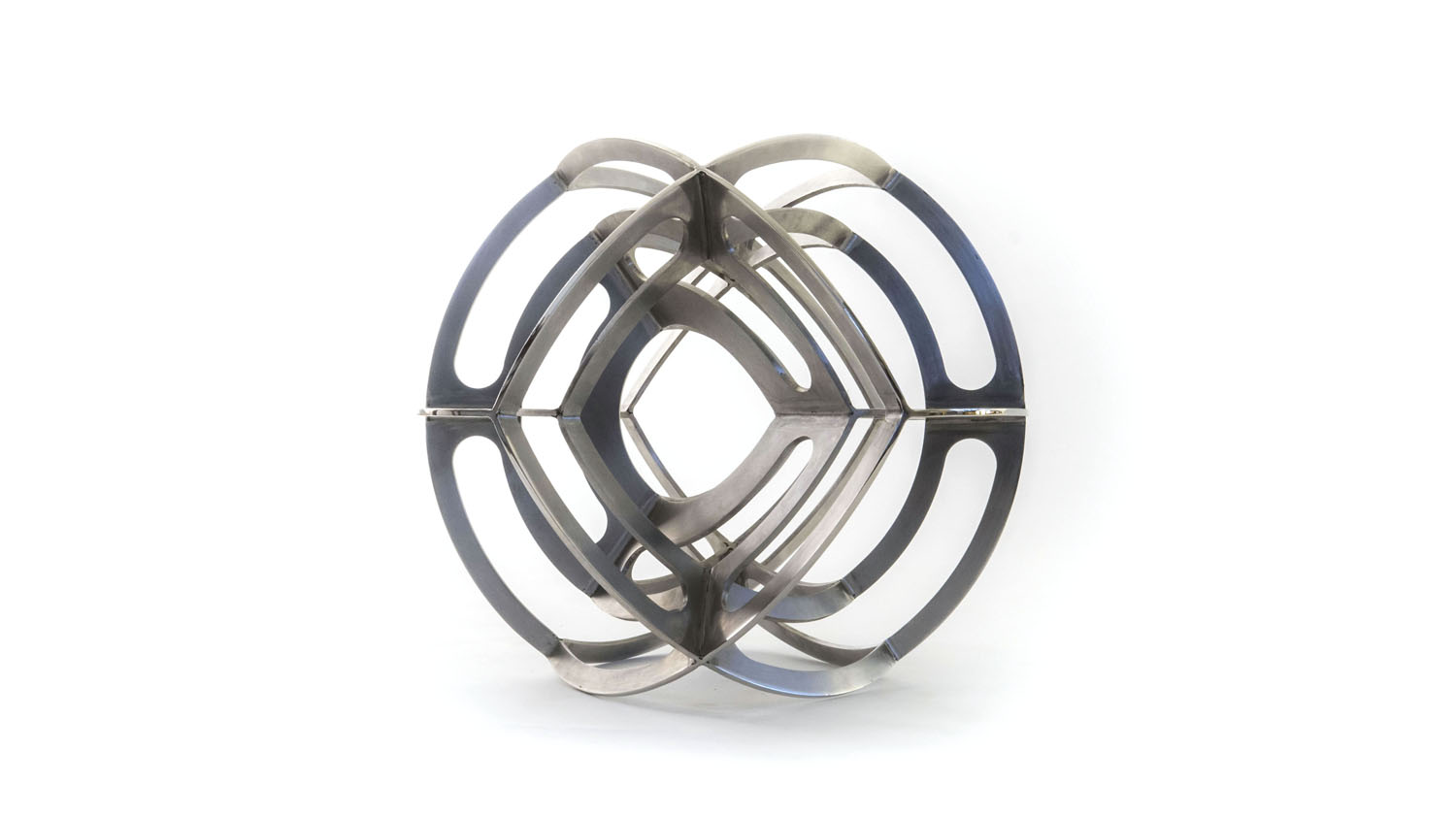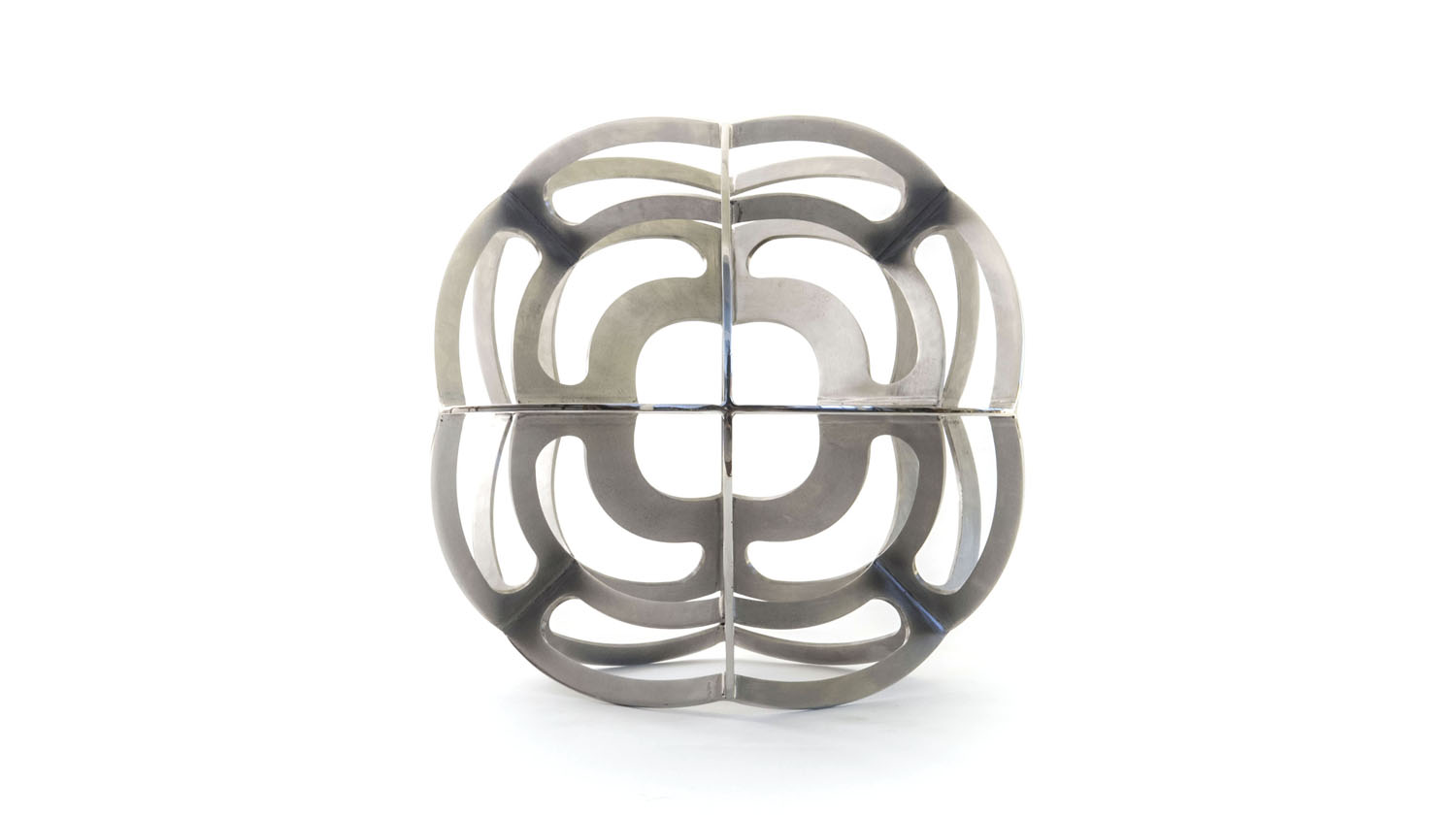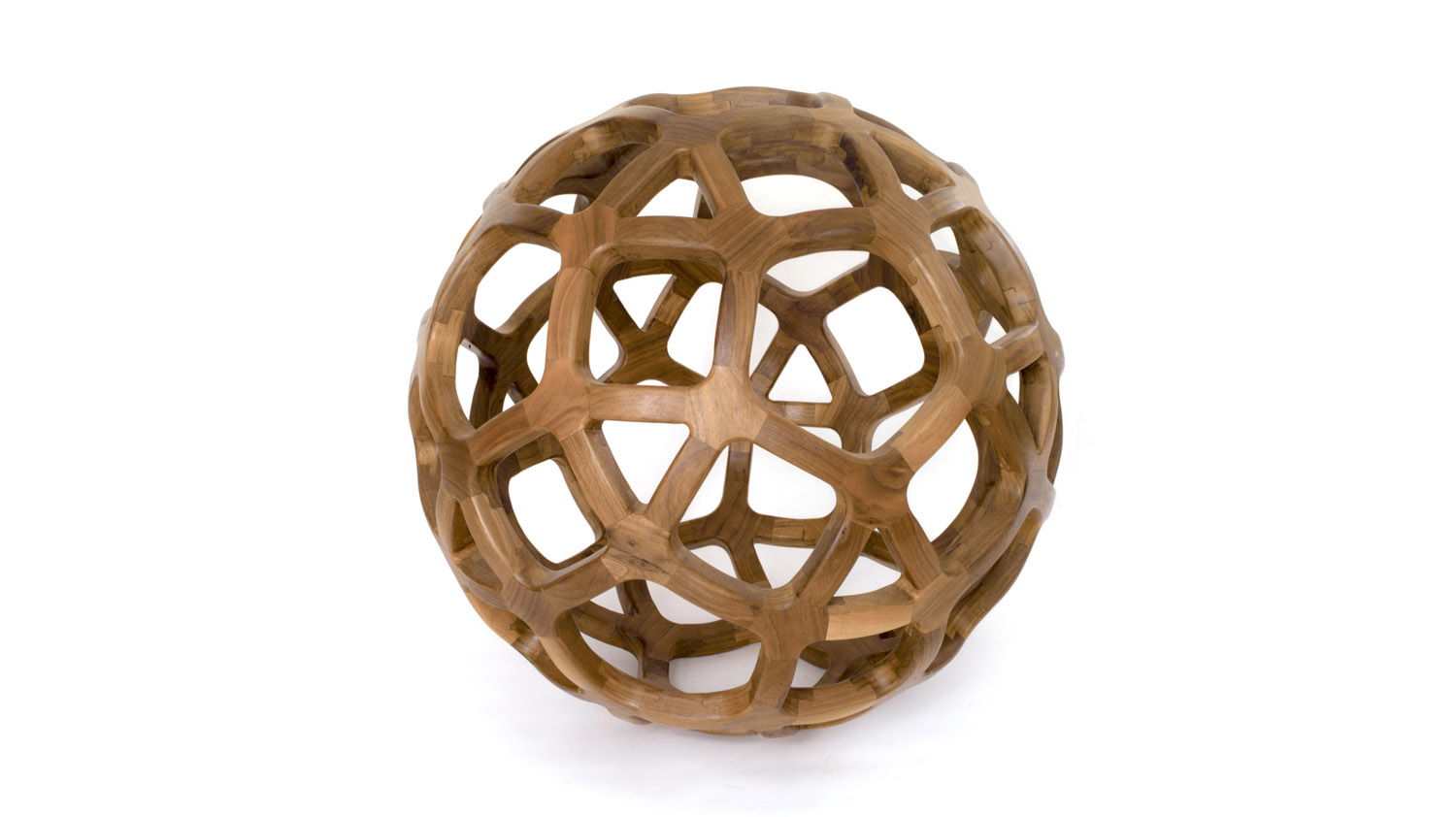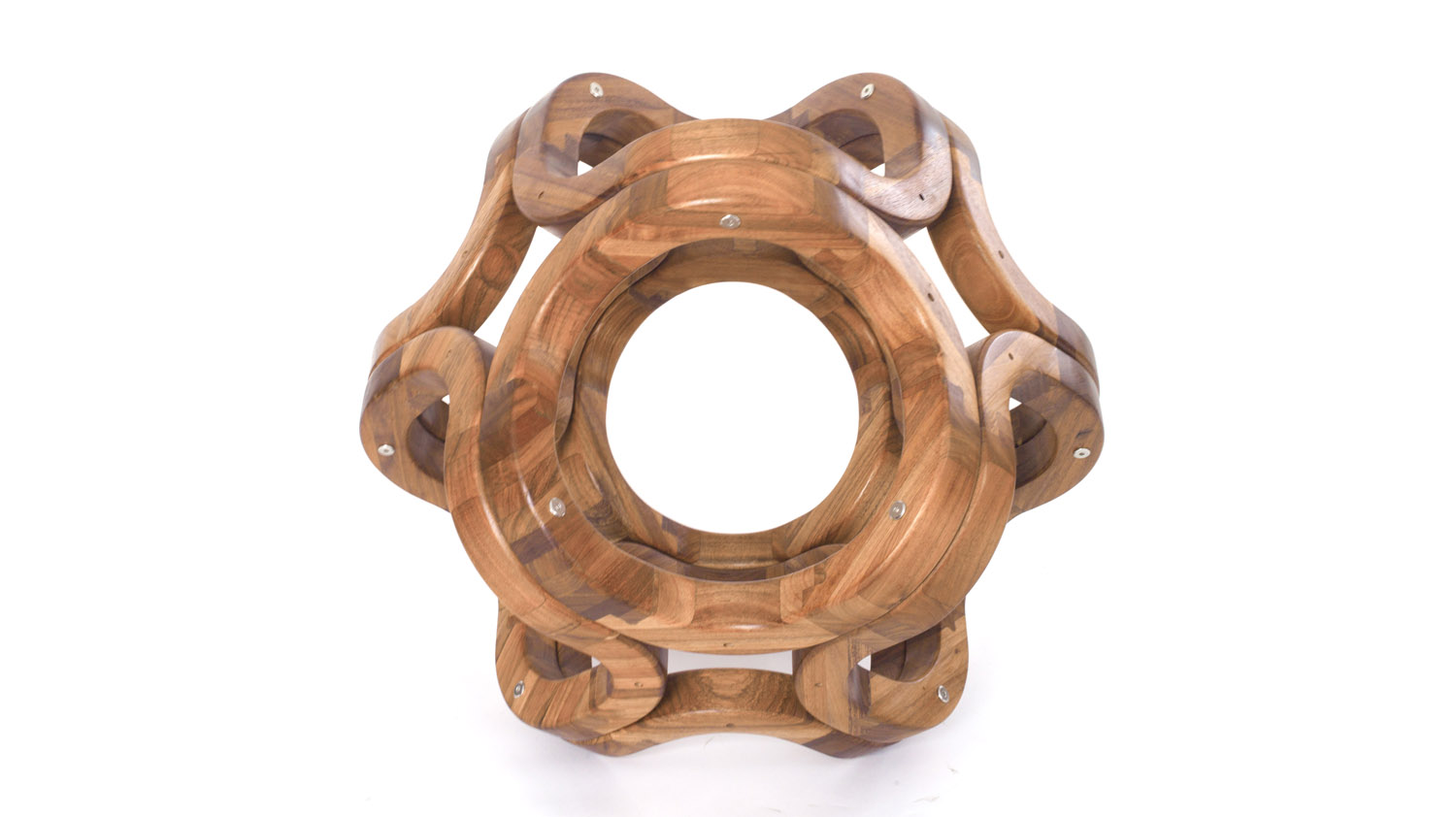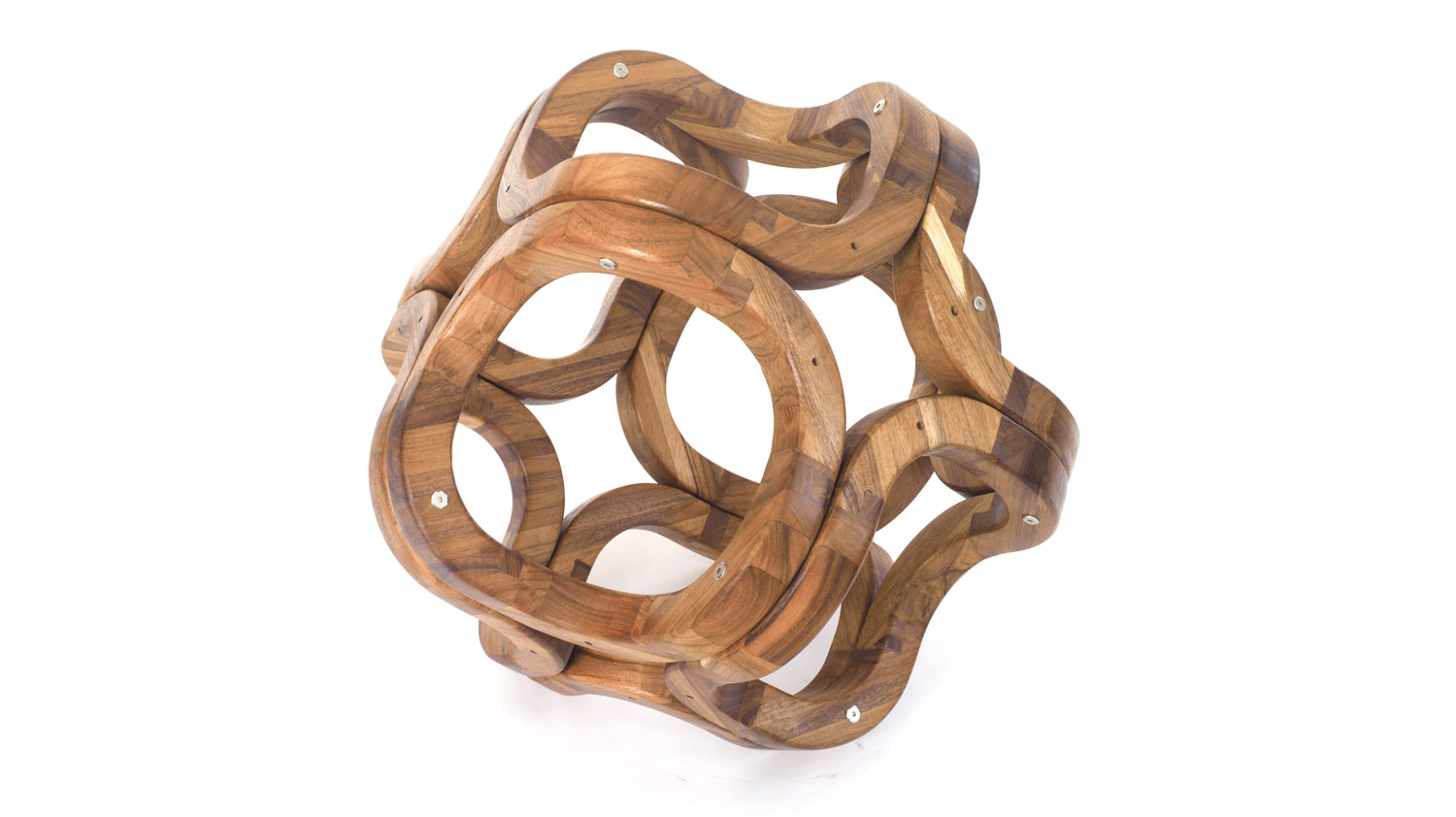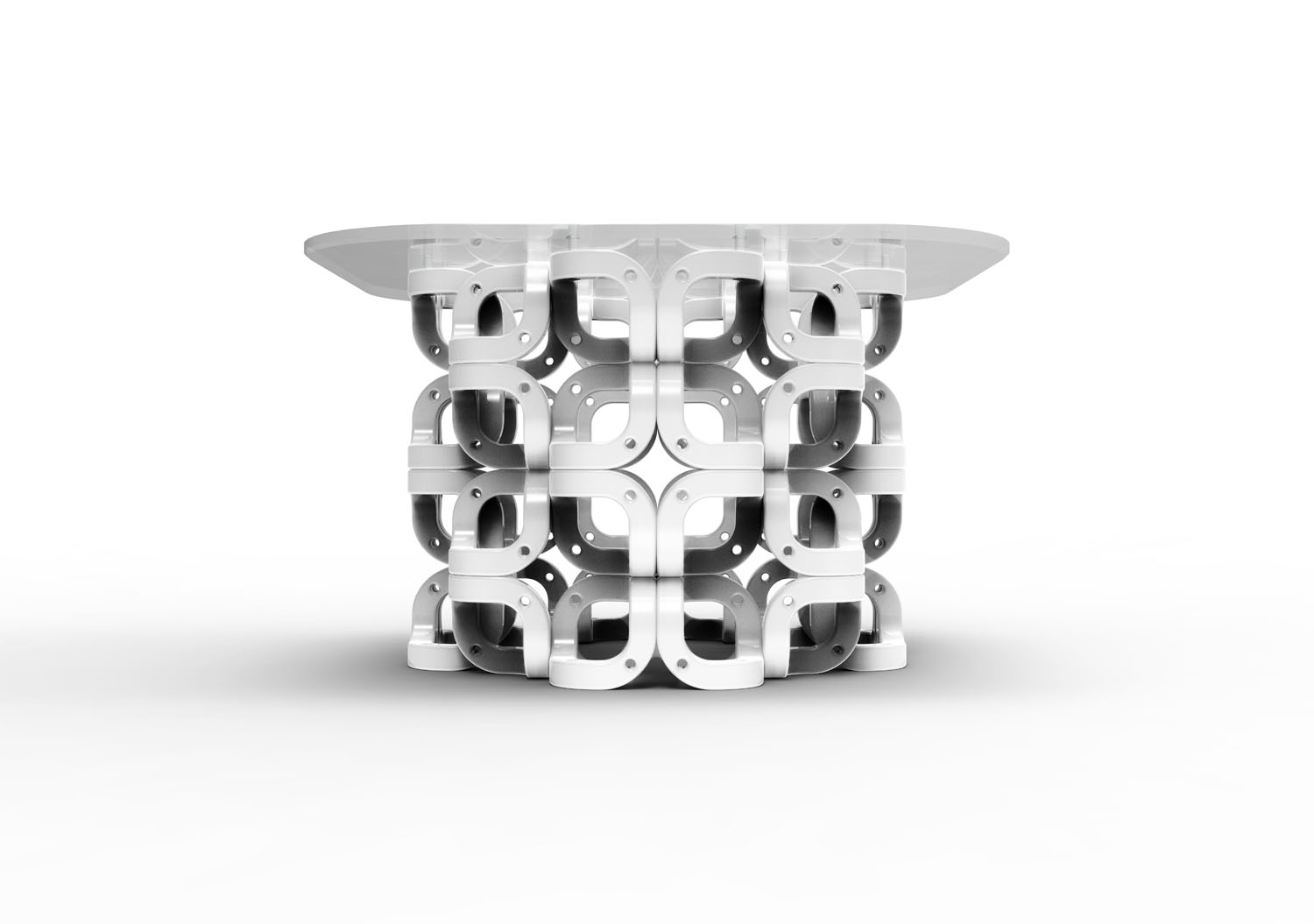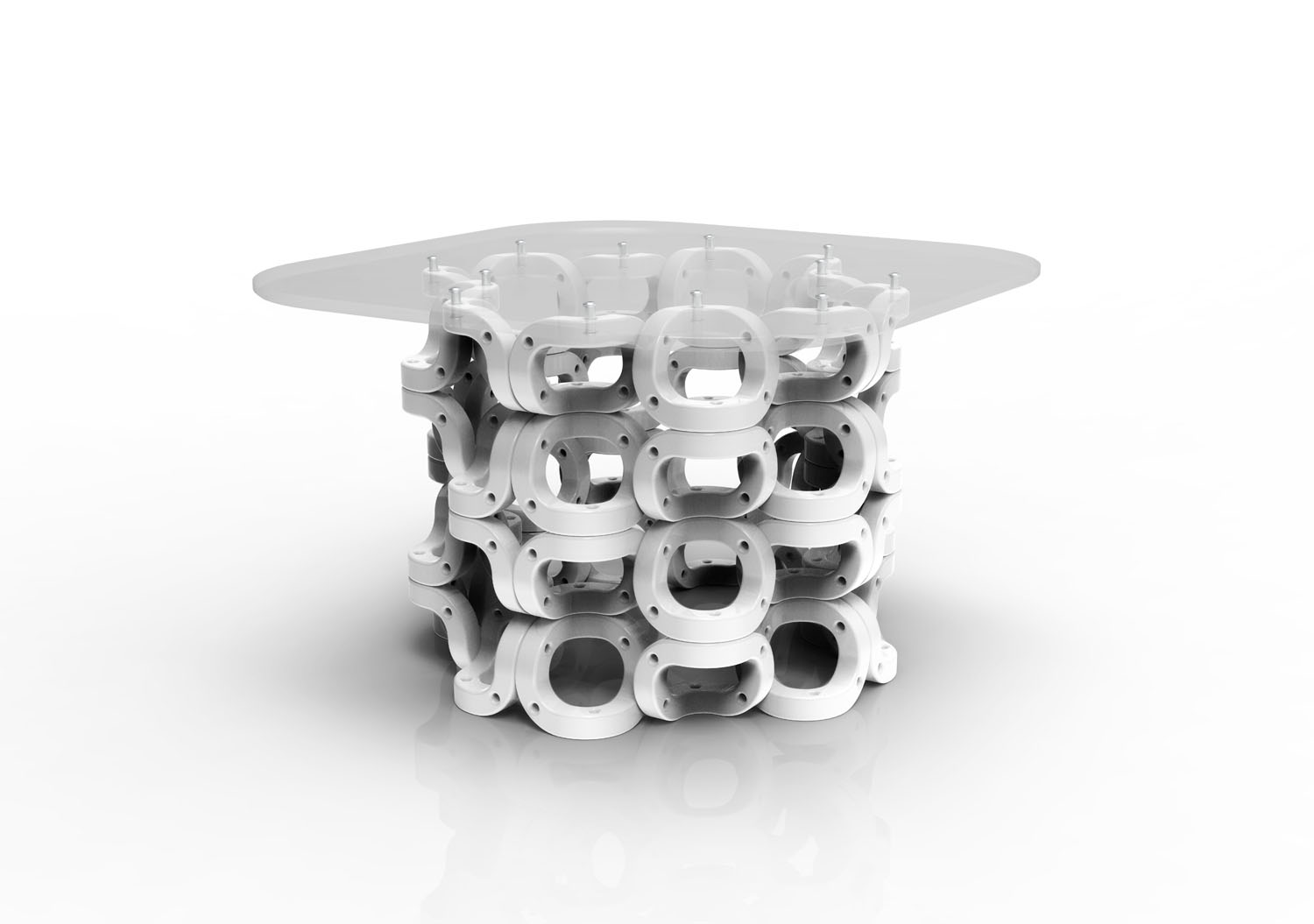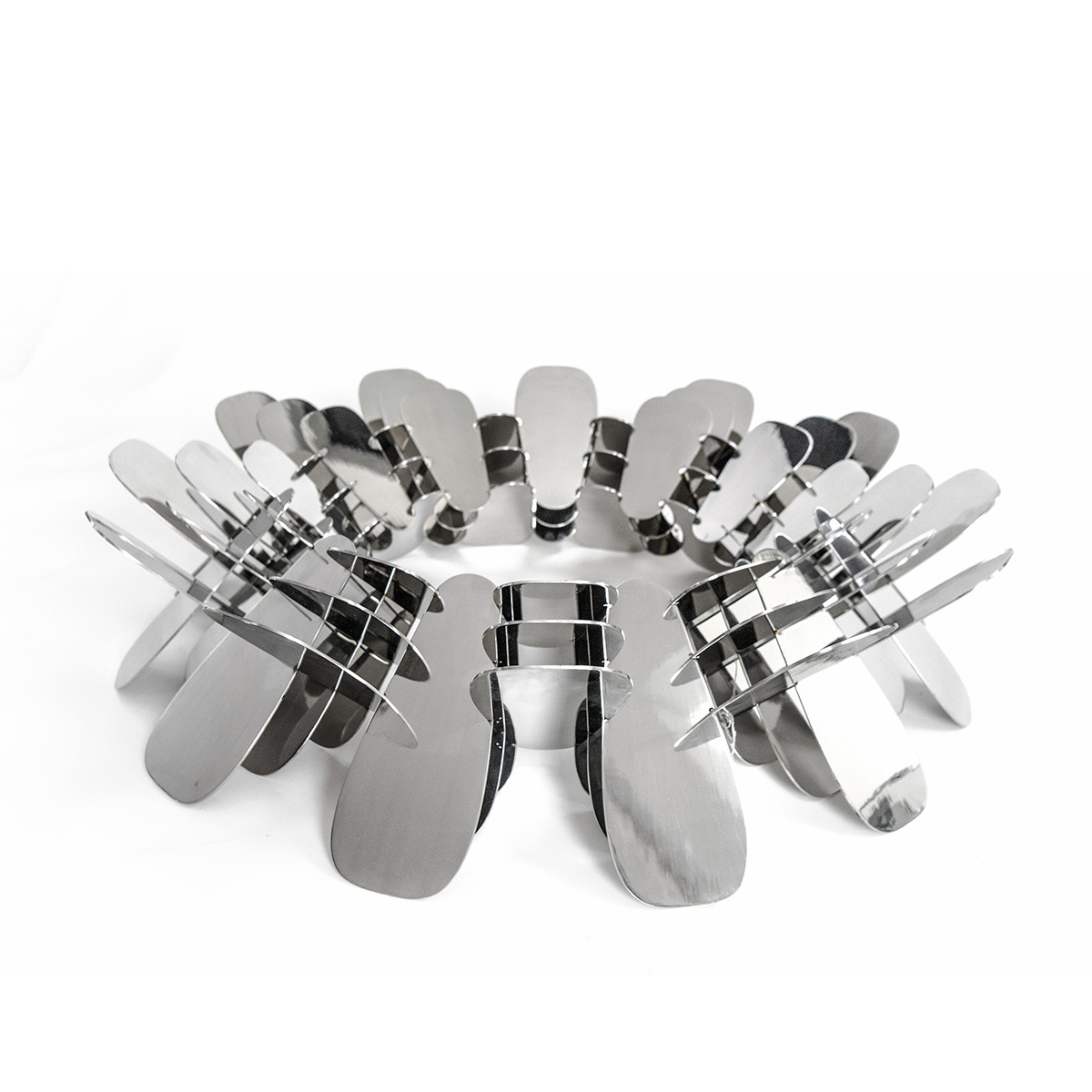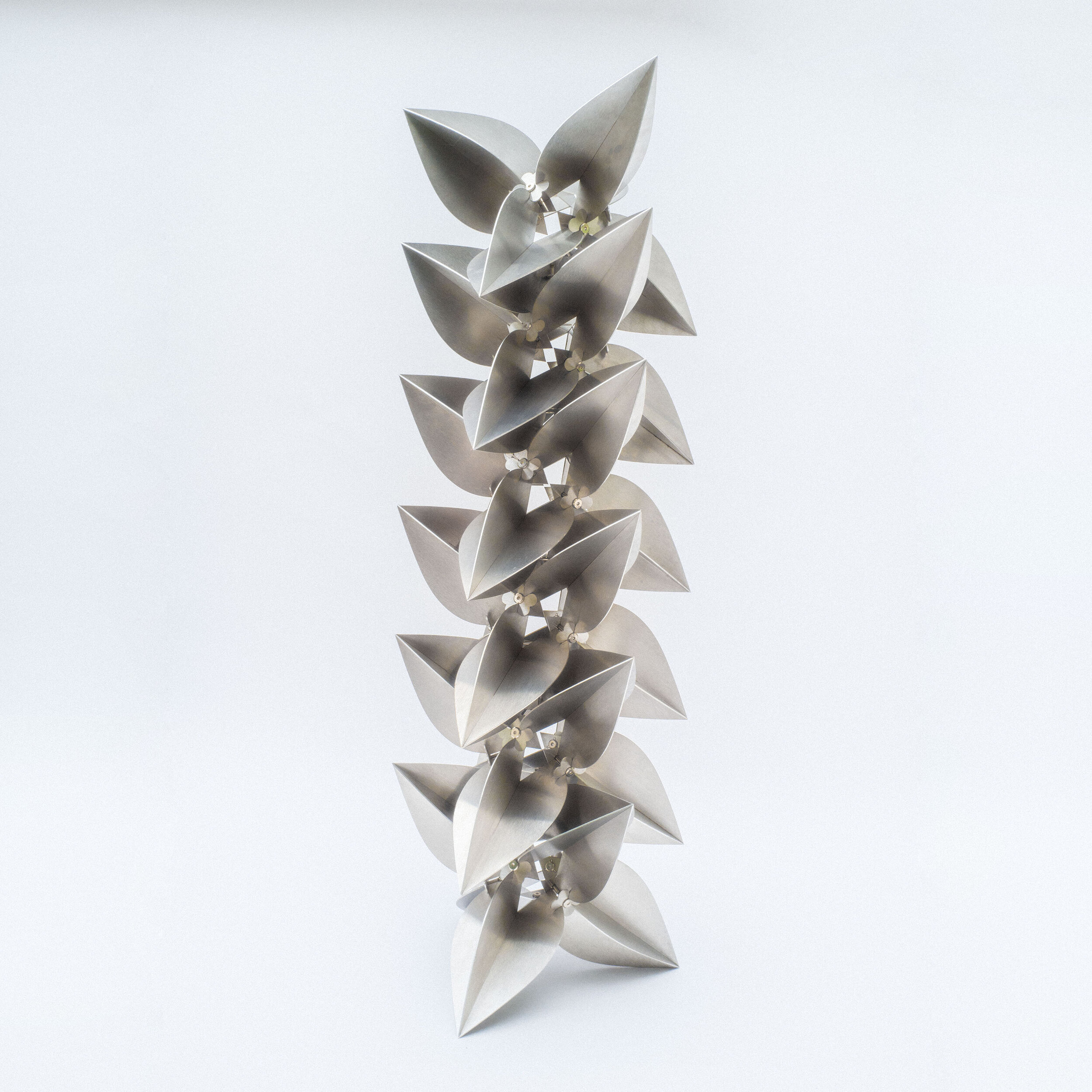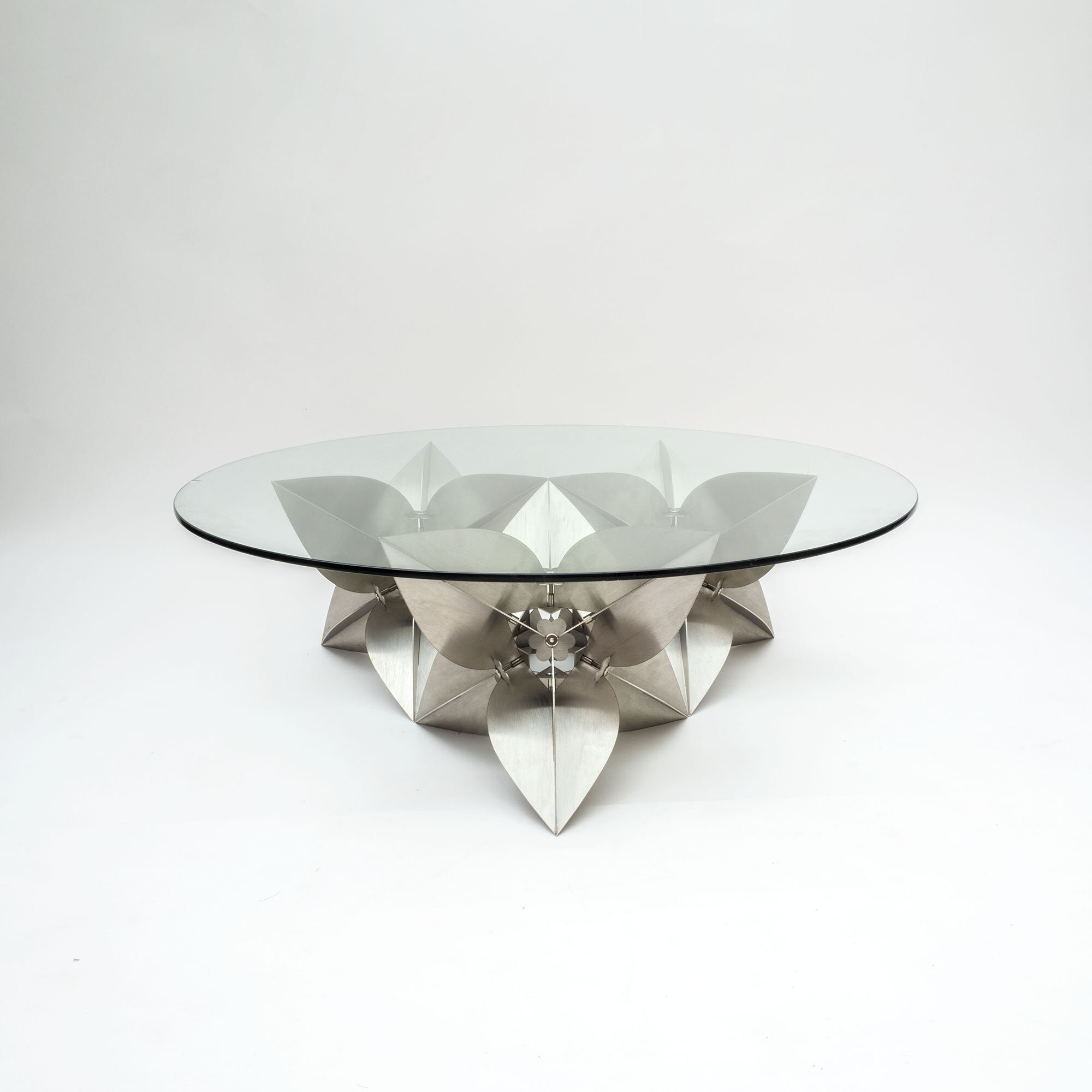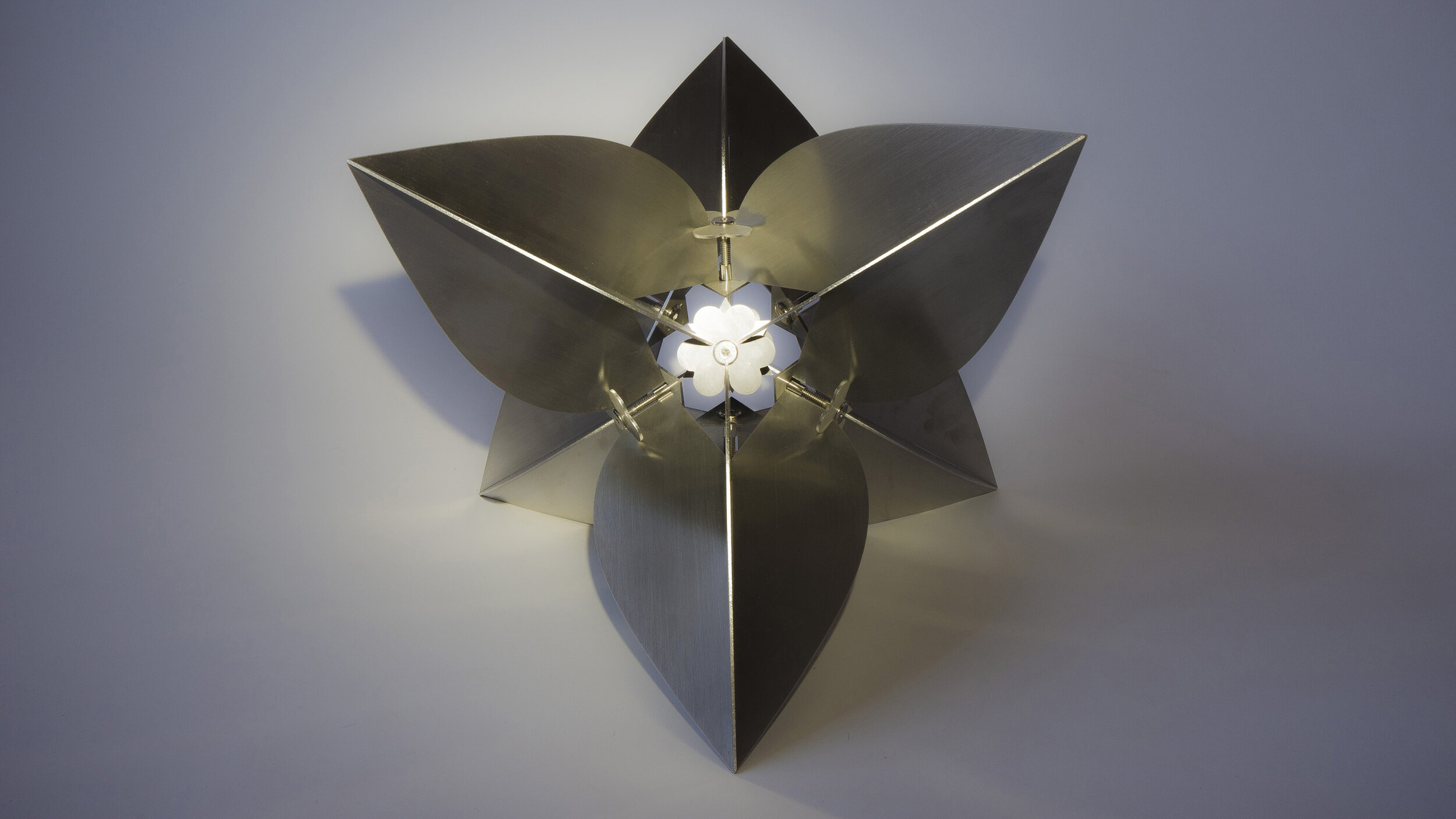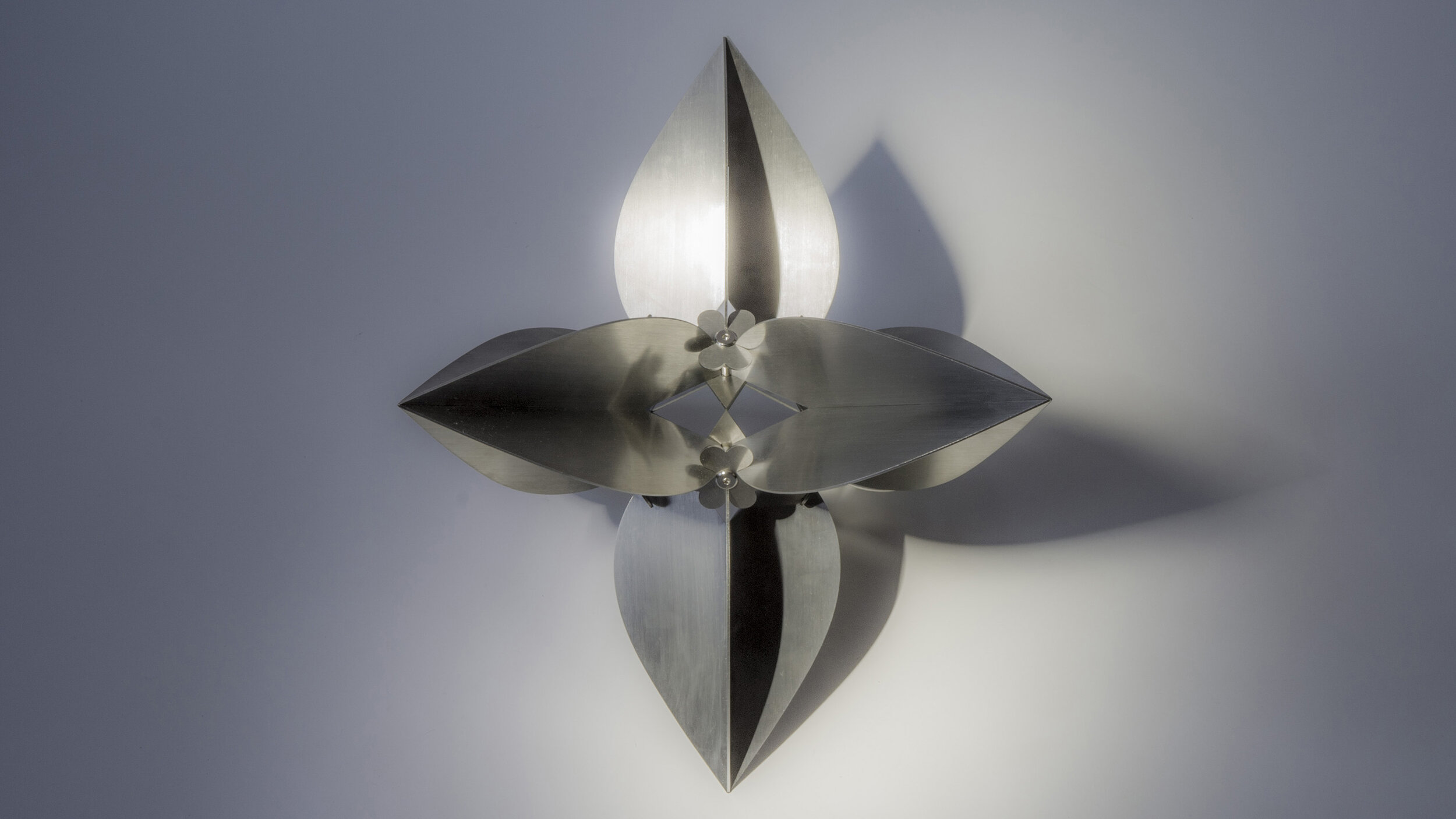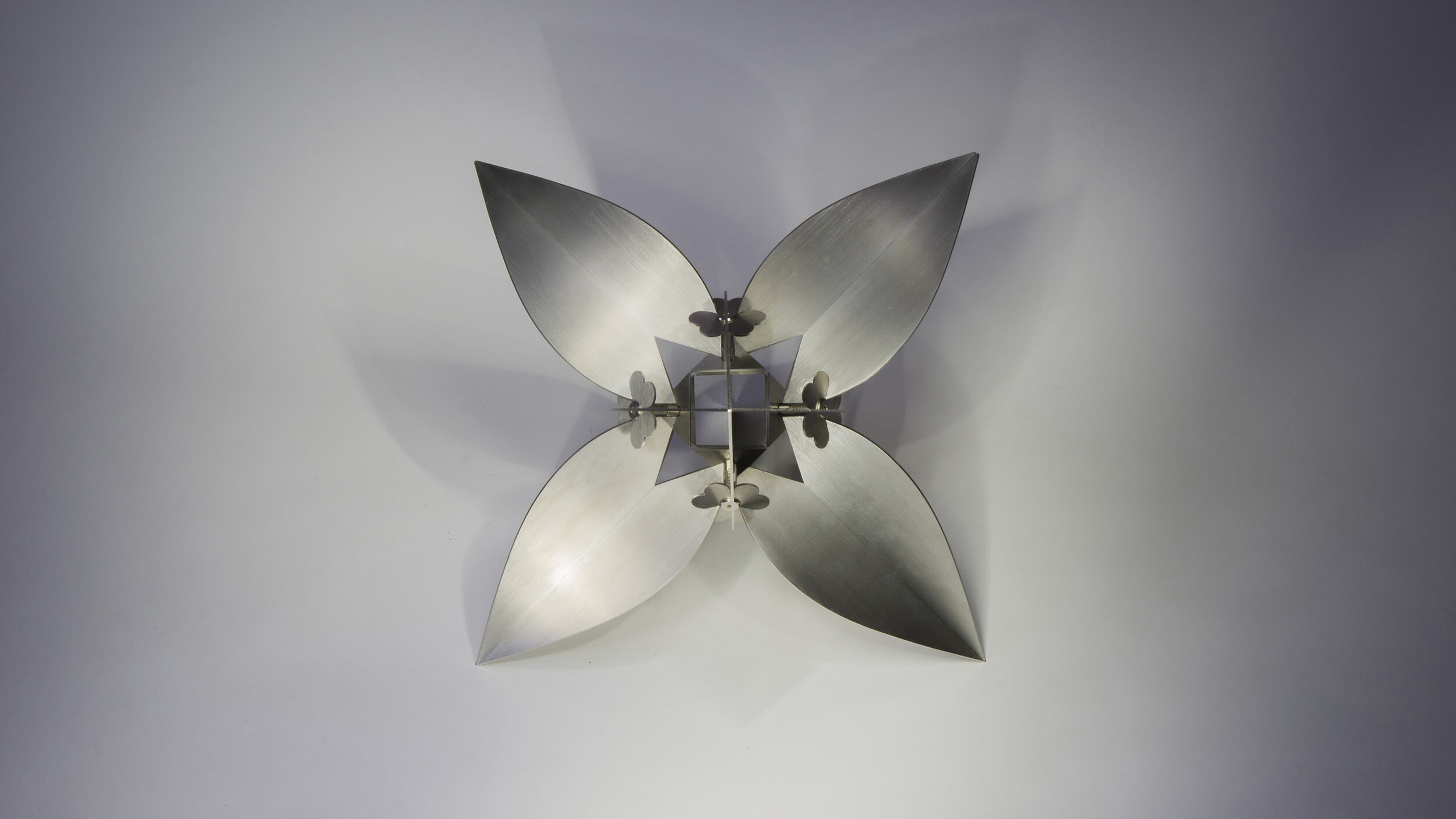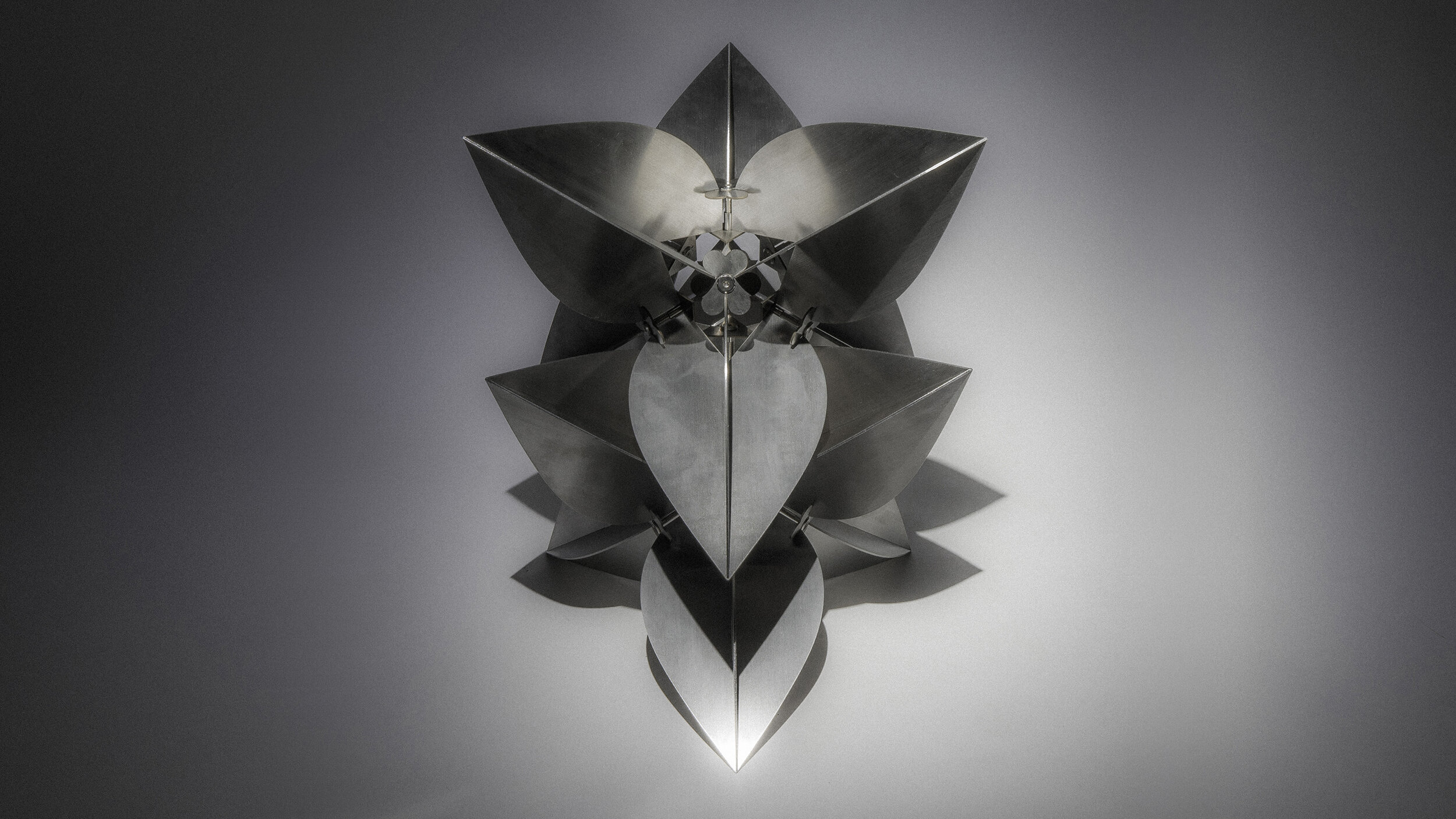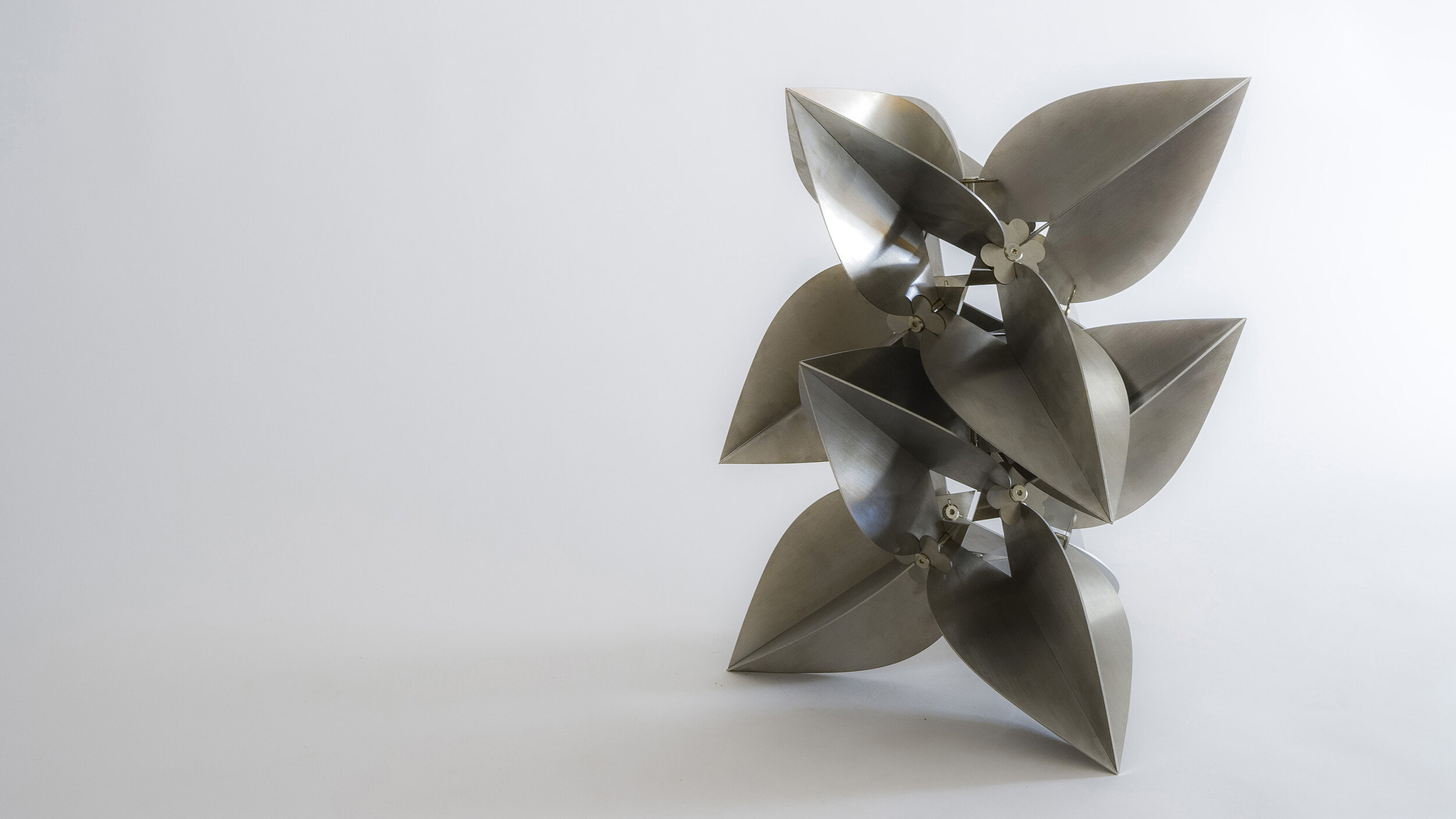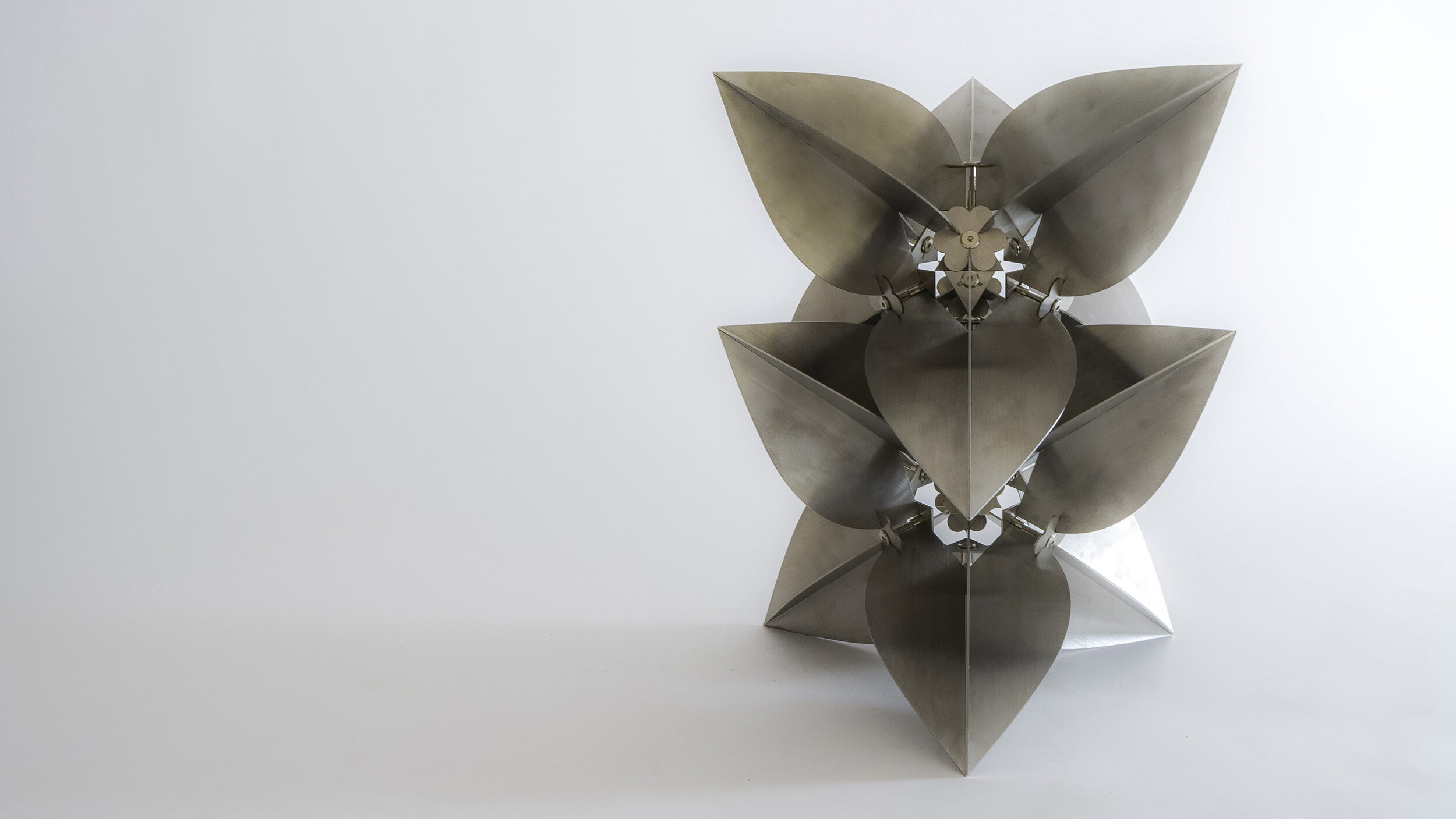PEDRO CERISOLA
PEDRO CERISOLA in his studio / workshop in Mexico City
“The game is the engine of everything. For any human and creative activity it is fundamental to achieve a look from it”
ABOUT
Pedro Cerisola (Mexico City, 1980), has a BA degree in Industrial Design from the Universidad Iberoamericana, Mexico City and an MFA in product design from the Academy of Art University, San Francisco, USA. He also studied photography (1994-1998 ) at the CAF (Centro de Arte Fotográfico), Mexico City, and at the Centro Cultural de Arte Contemporáneo, Mexico City. Based on a profound mathematical research, Pedro Cerisola combines advanced technology with highly skilled craftsmanship, to create intricate pieces from high quality materials with an impeccable finish.
BOUGAIVILLEA - Stainless steel sculpture module
The research of Cerisola is centred on the beauty of geometric constructive principles found in nature and how these systems can be applied to the design and fabrication of modular structures. The findings made are applied to the design of furniture, sculptures, playgrounds, lamps, toys and other daily life objects.
Pedro Cerisola´s work is part of the permanent collection of the University Museum of Sciences UNIVERSUM in Mexico City and has been exhibited at the Museo Rufino Tamayo, Museum of Modern Art in Mexico City and the Franz Mayer Design Museum, among others.
SYMMETRY AND ITS GAME
text by Damián Comas
The artist Friedensreich Hundertwasser said, “Since art cannot be taught and there are no human masters, there are only two masters if you really want one: the first one is your own childhood, your own self; the other one is nature.” An idea in which I deeply believe and from which, I redeem the work of multiple creators who center their quest on play and invention, in correlation with nature. […text continues below]
In the case of Pedro Cerisola, much of nature can be explained through science. He is a creator who, as a starting point, carries out profound research in the areas of physics and mathematics for the construction of his space poetry. Because, like so many creators, he also knows that the truths of the world are not only physical-mathematical but, in most cases, poetic.
NAUI Coffee Table, volcanic stone
Cerisola, creator, designer, sculptor, artisan, finds expression in complex symmetry patterns, starting from the millennial parameter of beauty that emerges from equilibrium. Divide something in equal parts to find its order, whether arithmetic: 2, 4, 6, 8; geometric: 2, 4, 8, 16; harmonic: 1 + 1, 2 +3, 5 + 8.
“But the numbers are just one of the languages of mathematics,” says Cerisola in an interview. “And I prefer the language of space to understand them”. In this way, it puts into play the means of production and the matter in order to find and express new orders.
“The game is the engine of everything. For any human and creative activity it is fundamental to achieve a look from it “. In the playful, intelligence and creativity are expressed, the boundaries of the disciplines overlap, the way is opened to new investigations and a new form of knowledge begins, of understanding the world. Well said Duchamp, “Life is a game. But for a game to make sense, you have to take it seriously. “ And so, through the playful, Cerisola takes matter to the limit of its synthesis and complexity.
When he uses such an ordinary object as metallic clothes hooks to create a rhombic triacontaedron that expresses itself from the multiplied and rearranged object, to the expansion of its shadows; or when it develops three unique pieces, to create the modules that when assembled create the perfect and organic toroidal shape of the Mesa Toro G10.
TORO G10, coffee table
Since wood is a living material, it is difficult to understand and face its composition, but Cerisola has managed to manipulate it by working with the manufacture of modular structures, as a sort of nodes or cells that make up their bodies. “I fell in love this way,” confesses Pedro, while speaking of the Mesa Toro G10. “It was such a beautiful sculpture that I looked for a glass, in the most subtle way, to turn it into a piece of furniture and that they could touch it, live with it”.
From toys, furniture, lamps, sculptures, objects ... Cerisola shows his interaction with the world. It combines advanced technology with craftsmanship. Translates the knowledge provided by nature and science in the matter and its structures; It makes use of the automated processes and the complexity of industrial design, as well as the naturalness and finesse of manual work. Sometimes, it creates ways in which its only function is to be seen and touched; and in others, it looks for beauty to become lamps, furniture, artifacts or toys, in order to interact with it.
For all the above, Pedro Cerisola has collaborated with the Mathematics Institute of the Autonomous University of Mexico (UNAM), in the construction of mathematical models for dissemination and education purposes. He has also participated in several seminars and conferences at a national and international level, related to science, design and art. In addition to being a co-founder and design director of Canica Toy Lab and a professor at the Instituto Tecnológico de Monterrey.
The work of Cerisola is part of the permanent collection of the University Museum of Sciences UNIVERSUM in Mexico City and has been exhibited at the National Museum of Anthropology and History, the Rufino Tamayo Museum, the Museum of Modern Art of the City of Mexico and the Franz Mayer Design Museum, among others. In conclusion, Pedro Cerisola calls art the playful and symmetrical expressions of life itself. He understands his work from different approaches that he is not very interested in, because, like good artists, his trade has neither tradition nor boxing and he knows, perfectly, that in creation there are no rules, nor laws to which one must adjust, with the exception of of our own or those that the game itself poses to us.
Damián Comas, Mexico, 2018
